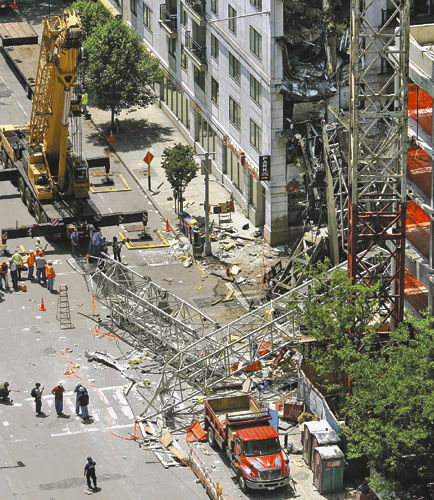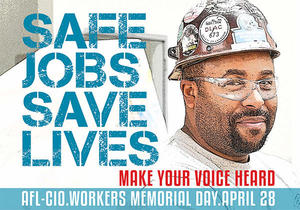This week, Safety Stand Down to prevent falls in construction are being held in New York and all over the nation
Falls are the leading cause of death in the construction industry in New York and in the US. Many of those deaths are preventable. To raise awareness of preventing fall hazards, OSHA asked employers in New York and all over the nation to organize during this week a voluntary event to talk to their employees about fall prevention safety.
In New York State, several events already occurred at the beginning of this week. On Monday June 2nd Turner Construction Company suspended work across the company to deliver a message focused on “Proper Pre-Task Planning for Safety” to 45,000 employees. The same day, in Malta, NY, Turner hosted a falls in construction stand down for 700 employees.
On Tuesday, in Manhattan, Related Hudson Yards hosted two falls in construction stand down events along with the sites general contractor, Tutor-Perrini (Buildings) for about 800 employees.
 New York Personal Injury Attorneys Blog
New York Personal Injury Attorneys Blog


 The long legal battle that ensued after two
The long legal battle that ensued after two  In New York City, a memorial including the Hardhat Procession into the Cathedral will be held this afternoon at St Patrick’s Cathedral during which OSHA’s Manhattan Area Office Director Kay Gee and Labor Liaison Laura Kenny will read names of construction workers killed on the job in New York City over the past year.
In New York City, a memorial including the Hardhat Procession into the Cathedral will be held this afternoon at St Patrick’s Cathedral during which OSHA’s Manhattan Area Office Director Kay Gee and Labor Liaison Laura Kenny will read names of construction workers killed on the job in New York City over the past year.  New York Labor Law Section 240 or Scaffold Law was enacted more than 100 years ago to protect construction workers from elevated work related accidents. It holds general contractors, owners and others liable if unsafe conditions at the job site lead to a worker’s injury or death (to learn more about NY Labor Law 240 see recent presentation by NY Construction Accident Attorney Anthony Gair)
New York Labor Law Section 240 or Scaffold Law was enacted more than 100 years ago to protect construction workers from elevated work related accidents. It holds general contractors, owners and others liable if unsafe conditions at the job site lead to a worker’s injury or death (to learn more about NY Labor Law 240 see recent presentation by NY Construction Accident Attorney Anthony Gair)